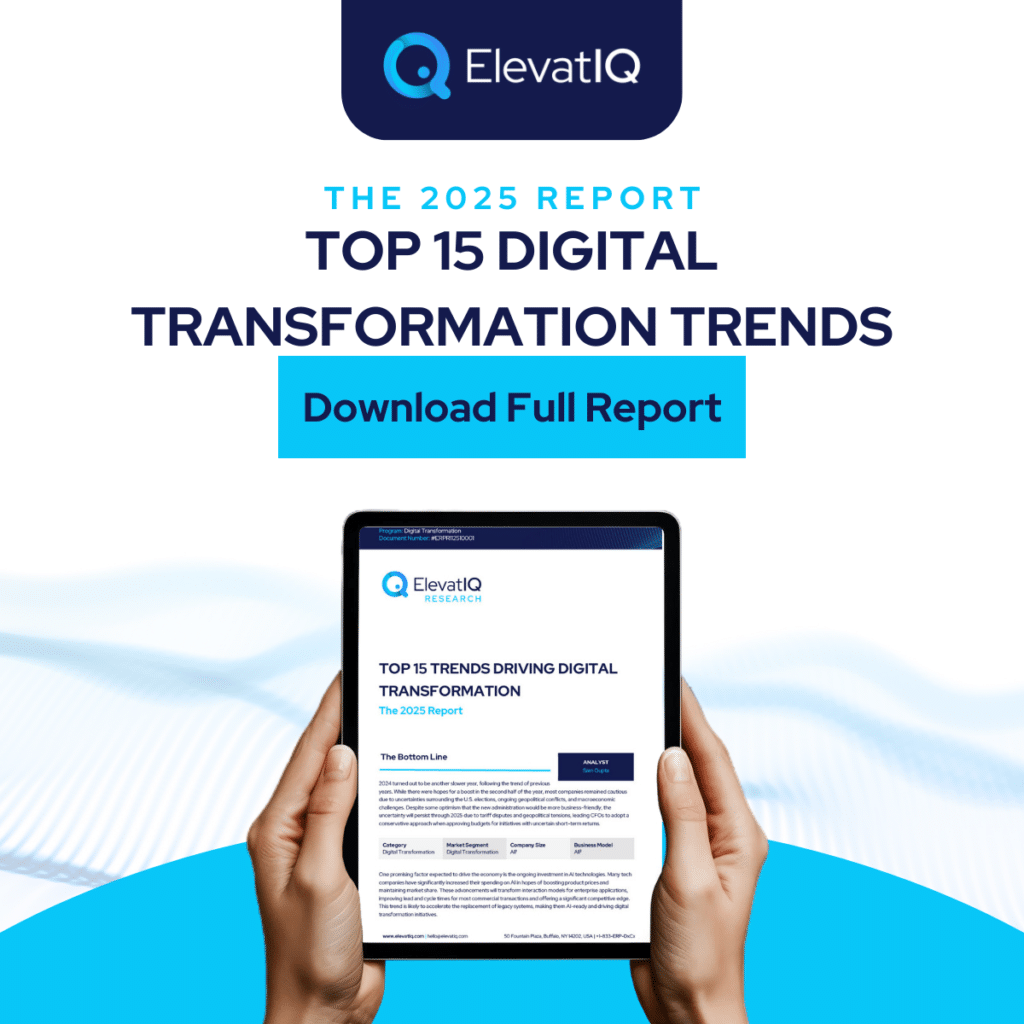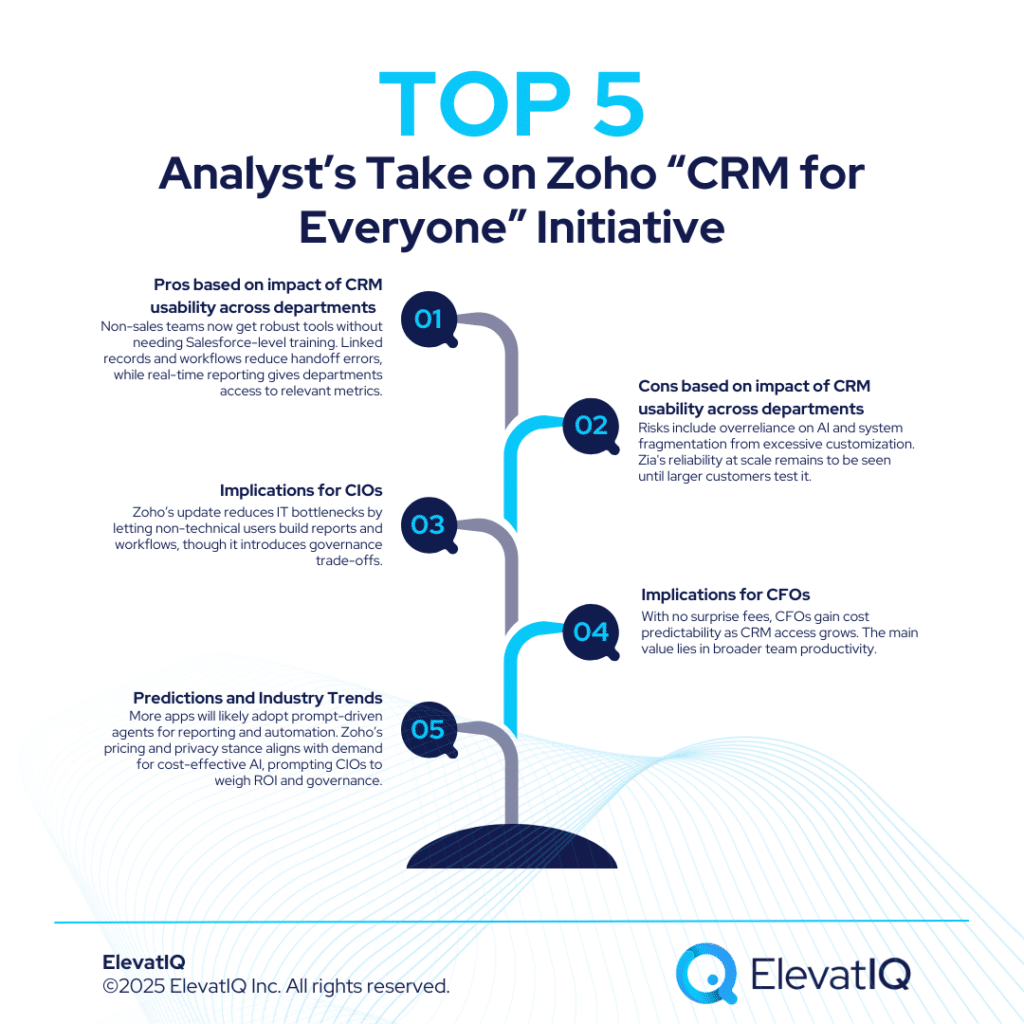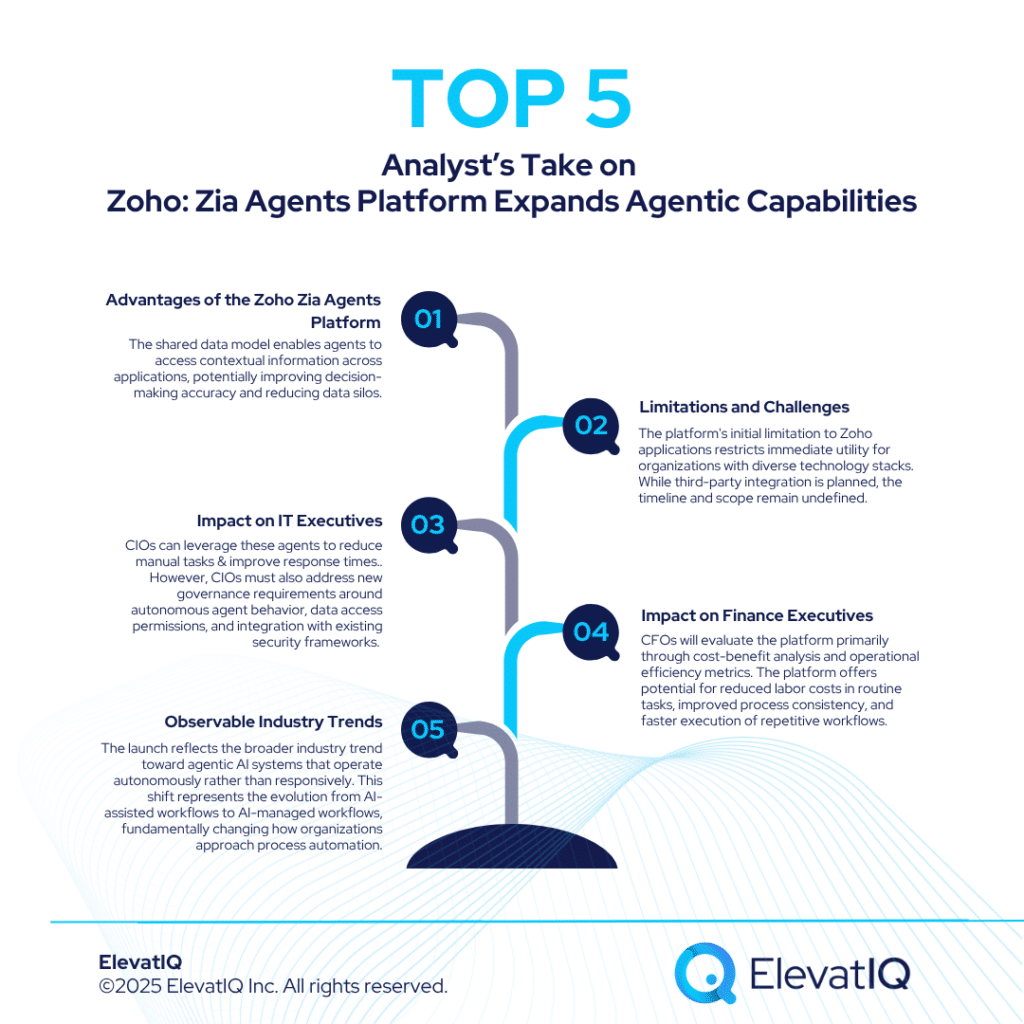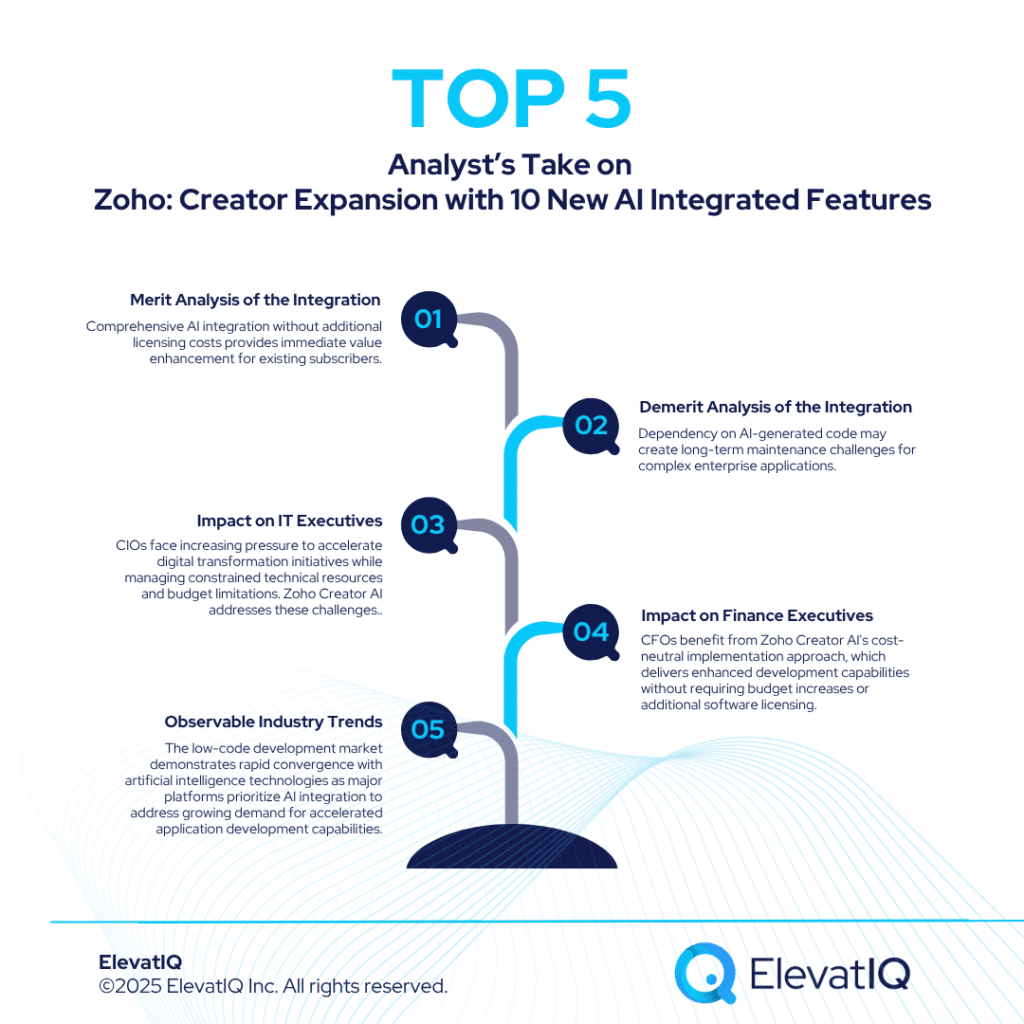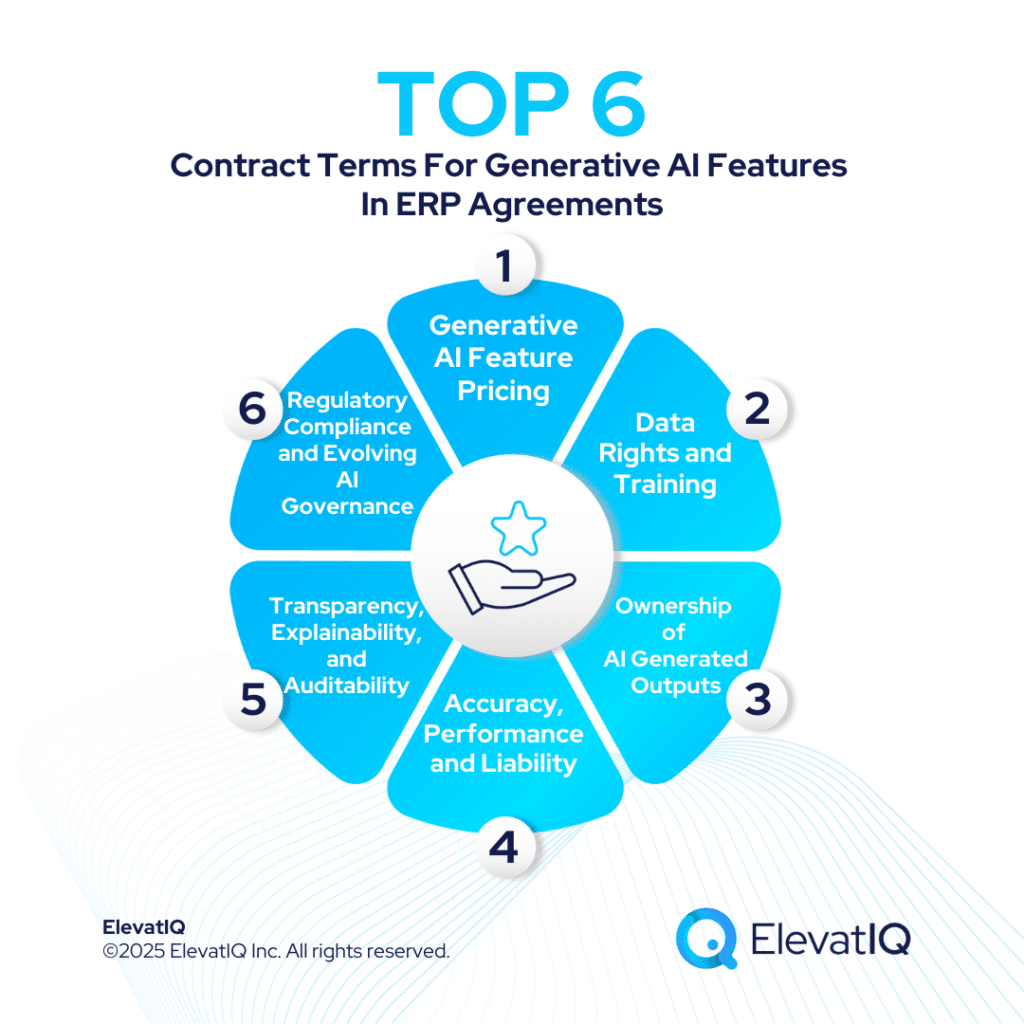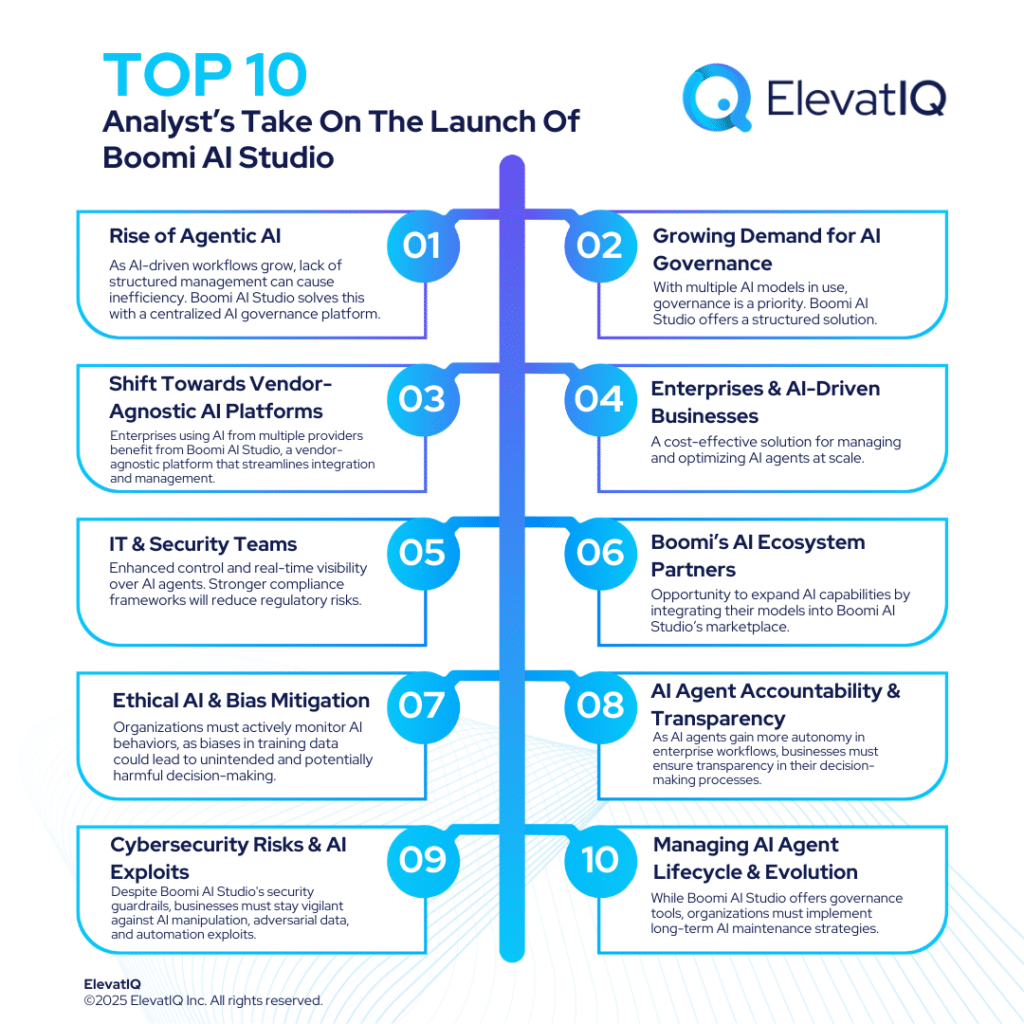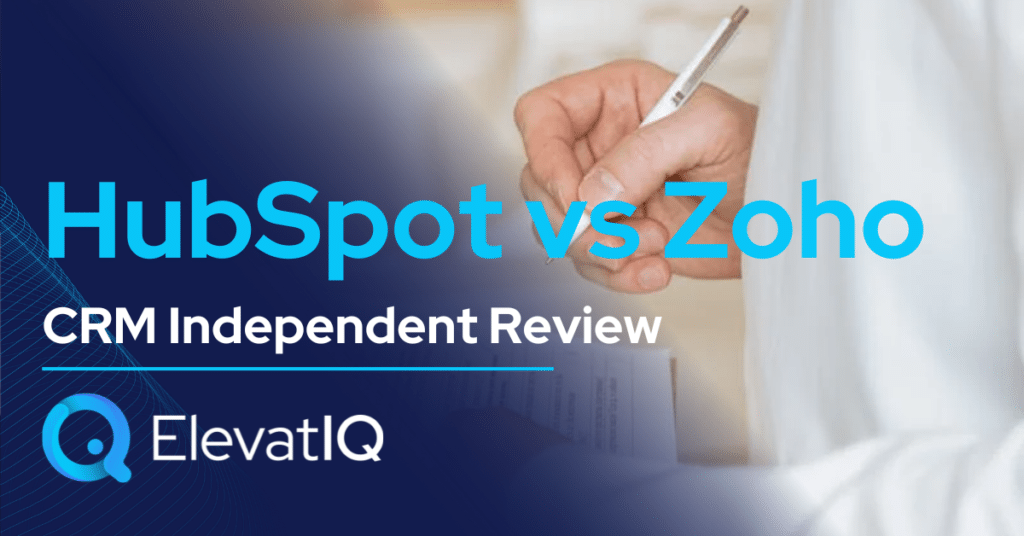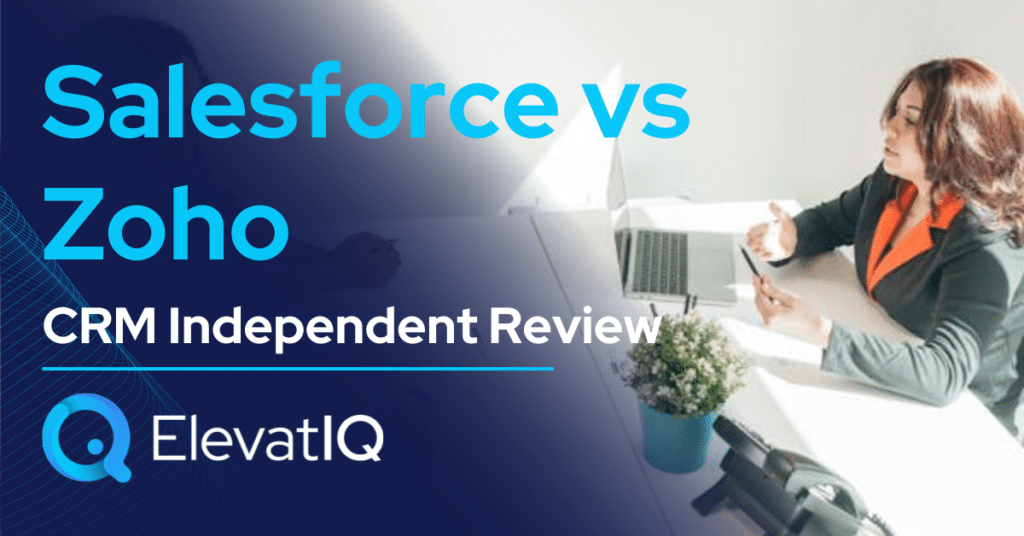Last Updated on May 20, 2025 by Shrestha Dash
Zoho Corporation has announced a significant expansion of its CX platform. Infusing it with advanced generative AI and workflow orchestration features powered by its in-house AI engine, Zia. These enhancements arrive alongside Zoho’s initiative to open up its CRM beyond the sales team to all customer-facing departments. Zoho CRM emphasizes that the new AI tools “remove technological barriers to CRM adoption across groups working to serve the customer”.
In practice, the new offerings let any user create reports, modules, workflows or even custom designs using plain-language prompts. All are underpinned by Zia’s generative capabilities. The roll-out also introduces two collaboration-oriented features – Connected Records and Connected Workflows. Thus, designed to link data and tasks across teams for more consistent customer service.
Strategic Focus: CRM for Everyone
With CRM for Everyone, Zoho CRM is positioning its CRM as a unified platform for sales, marketing, support, and other departments, not just sales teams. The company says this is part of “democratizing CRM” so that “multiple people in an organization need access to customer information”. CRM for Everyone is now generally available to businesses. It bundles the new Zia-powered AI tools with a reimagined interface and streamlined workflows. Thus, aiming to make CRM use intuitive for non-technical staff. In effect, Zoho is targeting the common hurdle that “CRMs have been relegated to only sales teams,”. Also, enabling marketing, onboarding, legal, finance and others to build and extend the CRM through simple prompts.
Zoho frames this strategy as lowering the learning curve for CRM. CEO Mani Vembu explains that CRM for Everyone is about building “capabilities that make it easy for anyone to build and extend CRM with simple prompts, without having to be an expert in the system”. In other words, by coupling generative AI with no-code tools, Zoho aims to let any user visualize and manipulate customer data as easily as typing a request. Early coverage highlights that the launch coincides with what Zoho calls an “innovative approach to CX,”. Also, where the CRM becomes a multi-department platform with consistent customers. The combination of an accessible interface and AI assistance is intended to accelerate adoption. For example, Zoho suggests the tools can lead to “quicker onboarding for new staff” and “fewer dependencies on IT departments”.
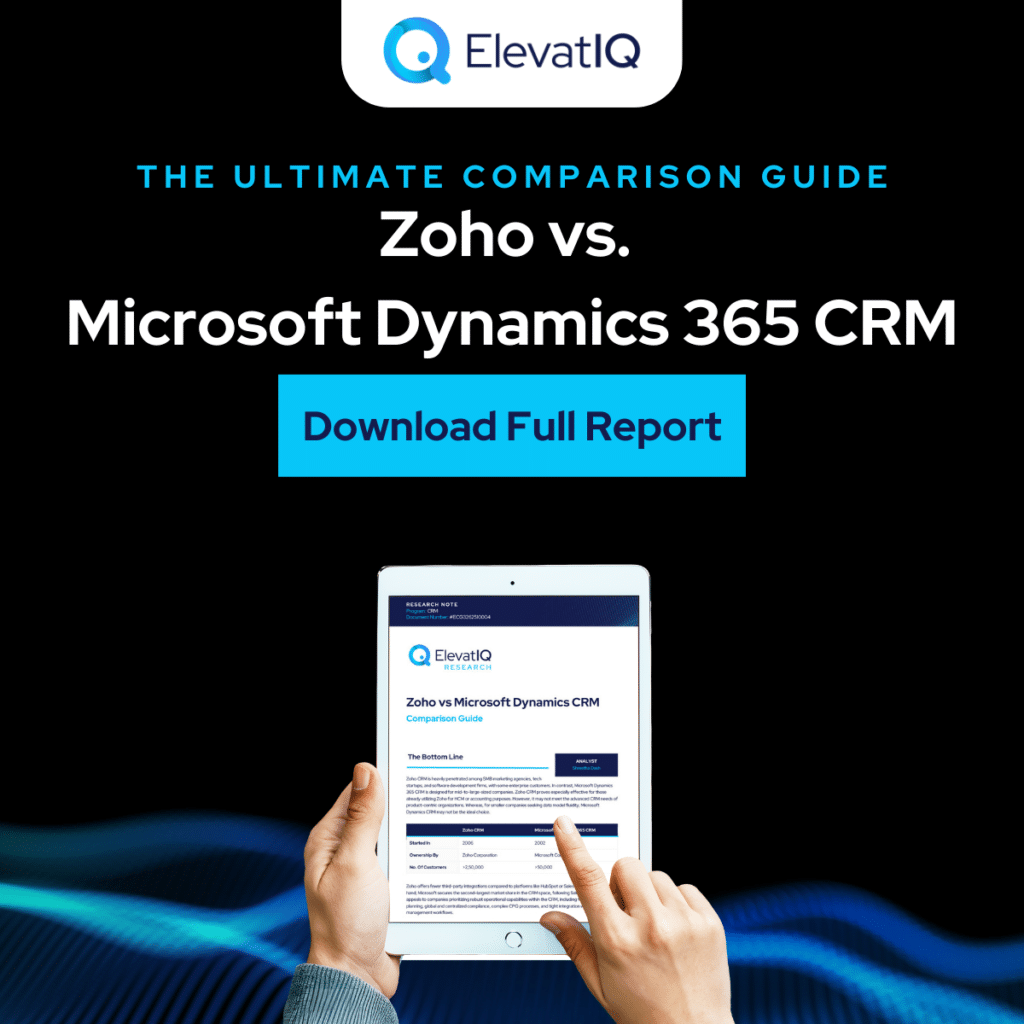
Deep Zia Capabilities
Zoho’s proprietary AI engine Zia now offers a suite of “agentic” capabilities. Meaning AI features that act on users’ instructions, across the CRM. Each major function is controlled via natural language prompts:
- Report Creation with Ask Zia: Users can request custom reports by typing a query. Zia will assemble the report in real time according to the user’s access permissions. Also, showing each step of the build process. The user can pause Zia mid-task, make edits, and then resume, ensuring accuracy and compliance throughout.
- Custom Module Creation: Non-technical users can extend the CRM schema via plain-language commands. For example, one can tell Zia to create a new module, adjust field types, or set custom permissions. Zia interprets these instructions and implements the changes without any coding. The feature is described as “a no-code experience” that turns natural language into system configurations.
- Workflow Creation with Ask Zia: Similarly, teams can define automated business processes by describing desired rules and actions in simple sentences. Zia then builds the requested workflows end-to-end, without the user needing to navigate complex setup screens or write logic. According to Zoho, this agentic AI workflow builder “eliminates the need for technical expertise”.
- Image to Canvas: This unique feature lets users import a design image (such as a mockup). And also, have Zia translate it into a visual interface layer within the CRM. In effect, the CRM’s system-of-record can be themed or laid out based on an uploaded image. Thus, giving teams more control over how data looks. Zoho describes this as adding “a visual design layer to the system of record”. It’s a creative tool for branding or readability, letting users bring custom visuals into the CRM without manual UI coding.
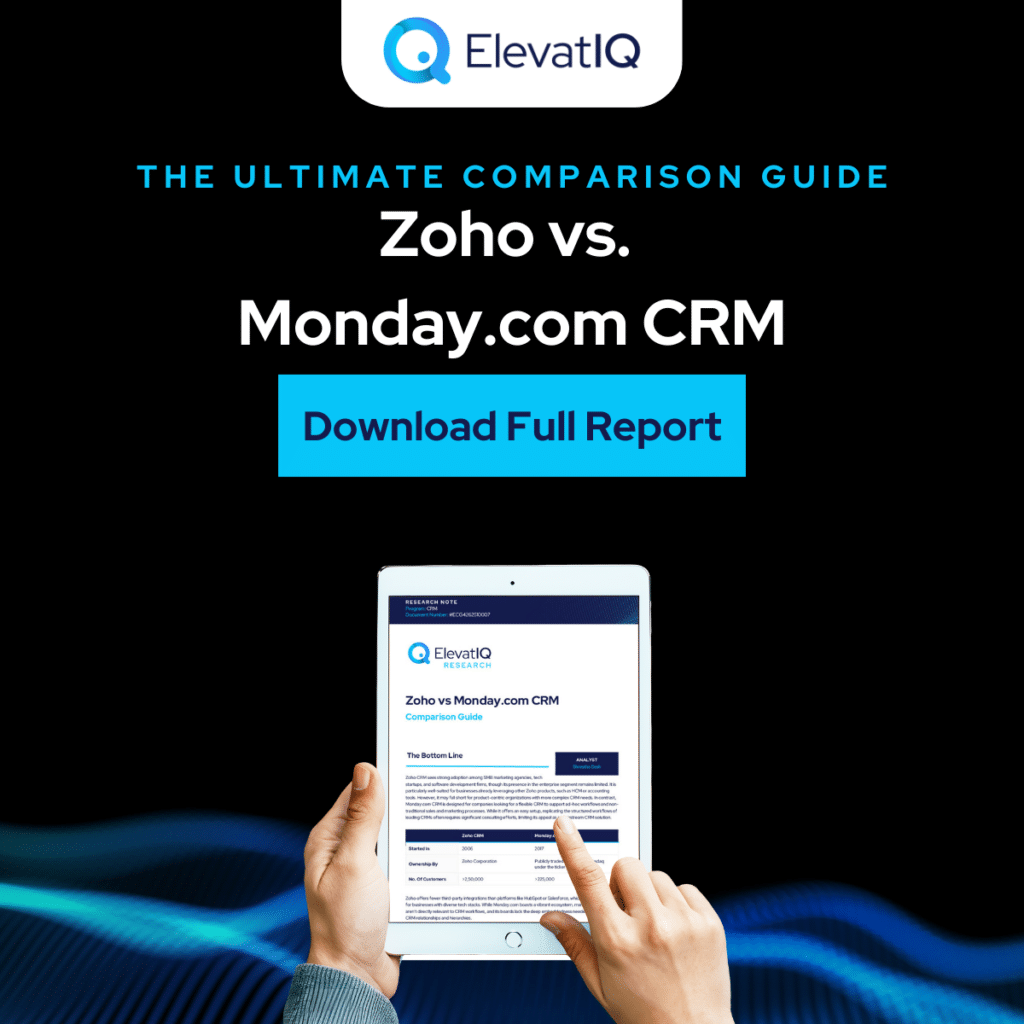
Connected Records and Connected Workflows
Beyond AI generation, Zoho CRM also added two features to improve teamwork and data consistency: Connected Records and Connected Workflows.
- Connected Records: This feature automatically links related data across modules as a customer moves through different stages. For instance, a sales lead, a support ticket, & an invoice for the same customer would share context. So, teams see the full story. Zoho describes Connected Records as a way to “automatically link work across team modules to ensure the smooth flow of context through the customer journey”. It means that marketing, sales, service, and billing can all see relevant information gathered elsewhere without manual data entry. This linked view helps avoid silos.
- Connected Workflows: This is an orchestration engine that coordinates processes across departments. It acts like a central builder that automatically triggers handoffs between teams. For example, once a deal closes in sales, Connected Workflows could kick off an onboarding process in another module, then loop in finance, then legal, ensuring each department sees updates at the right time. Zoho says this “orchestration engine” keeps every team aligned in the customer experience. The goal is to make inter-department cooperation seamless: all teams (sales, marketing, onboarding, account management, finance, legal, etc.) have access to the same updated information at all points in the lifecycle.
Pricing and Availability
All of these updates are rolled into Zoho CRM under its CRM for Everyone initiative. As of May 2025, CRM for Everyone is generally available to customers. Importantly, Zoho states that the new AI capabilities are included in existing CRM license costs, not charged as a separate premium. In other words, there are “no surprise costs” for these features. Zoho’s published pricing shows that Team user licenses (for non-sales CRM users) start at $9 per user per month on any paid edition of Zoho CRM. This low entry price is aimed at extending CRM access to all customer-facing roles. Zoho emphasizes that unless otherwise noted, customers simply get the Zia-powered AI tools as part of their subscription.
Zoho has not announced any additional fees specifically for the new AI features. In practice, a company with both sales and non-sales users would pay the standard per-user rates (starting at $9/user/month for the “Team” tier) and automatically gain the AI and orchestration capabilities. This pricing approach is part of Zoho’s pitch: they claim you get enterprise-class AI functionality “without the enterprise price tag”.

Zoho’s AI Design Philosophy
Throughout this update, Zoho reiterates that its AI is built with privacy, practicality, and cost in mind. According to the company, none of its AI models (contextual, assistive or agentic) are trained on customer data, and Zia does not retain customer information. In other words, Zoho’s approach is to apply AI intelligence without compromising data privacy: the AI assists users based on their data, but Zoho says it won’t “ingest” or store that data in model training. This privacy-first design is a selling point for businesses wary of data misuse.
Zoho also highlights the balance between AI power and efficiency. It says it “builds AI tools with usefulness in mind,” opting for models that are powerful enough to help users but lean enough not to drive up costs for customers. The company explicitly states it right-sizes AI so that customers don’t face extra charges. In practice, this means the company’s marketing emphasizes that all the new AI-driven features come in the base license with no hidden fees.
Overall, Zoho’s stated design philosophy is to make AI tools that are immediately practical for workers while respecting privacy and budget. As an industry analyst observes, Zoho’s offering “blends usability, privacy safeguards, and cost-effective AI tools” to deliver “more consistent, personalized customer experiences without requiring deep technical expertise or expensive integrations”. In short, Zoho positions Zia as a user-friendly AI assistant embedded in CRM, not a costly add-on or a black box for data.
Common Questions We’re Hearing
- Are our customer records safe? Zoho emphasizes that Zia’s AI models never use customer data to train the AI, nor do they store it. In practice, this means the AI analyzes your CRM data to build reports or workflows in real time, but Zoho says it won’t feed that data back into any generic model or retain it beyond the task. This should allay fears about data leakage. In short, the AI features should not expose or repurpose your customer data beyond your own organization.
- Can non-technical teams really use this? Zoho’s new tools are explicitly designed for ease. Business users can issue plain-language prompts – for example, “create a report of all opportunities > $10k” – and Zia does the heavy lifting. According to Zoho, even someone with no CRM admin experience can generate custom reports, create modules or automate workflows by simply typing a request. We have noted that this “prompt-based control” and visual feedback make CRM simpler for end users. Of course, there will still be a learning curve around how to phrase requests effectively, but the interface is far more intuitive than traditional configuration screens.
- How do these features fit into our existing systems? The new features are built into Zoho CRM, so they natively work with Zoho’s own applications (Zoho offers over 55 integrated business apps). Any data or workflows you create with Zia live in the CRM. If your business uses other tools, Zoho CRM still provides APIs and connector apps as before, but the generative-AI and orchestration tools apply within the Zoho ecosystem. In other words, there’s no special gateway needed for these features; they enhance the standard Zoho CRM, and any integrations you’ve set up continue to function. (It remains to be seen how Zia will interoperate with third-party systems in the future.)
Analyst’s Take
Impact on CRM Usability Across Departments
Zoho’s update was a major push toward wider CRM adoption. By embedding Zia’s agentic AI into everyday tasks, Zoho is “addressing a long-standing CRM friction point: complexity”. In practical terms, this can make customer data more accessible to departments that historically struggled to use CRM systems. Instead of forcing marketing or support teams into a sales-centric interface, they can leverage AI assistants and tailored views. It is also noted that enterprises often find their CX efforts hampered by siloed processes.
Pros and Cons
Pros: For cross-department collaboration, the benefits could be significant. Teams outside sales gain a toolset as robust as what sales has had, without needing Salesforce or similar training. Automated linking of records and workflows should reduce handoff errors, and on-the-fly report generation helps each department see metrics that matter to them. The democratization of analytics – “anyone can create…reports in CRM with a simple prompt”, may surface insights that were previously too cumbersome to extract. This could encourage more consistent data entry and usage, as more people rely on the CRM for their tasks.
Cons: On the flip side, potential misuse or overreliance on AI suggestions might arise. For example, if a user incorrectly phrases a prompt or if Zia misinterprets a query, the resulting report or workflow could be flawed. Because the system lets non-experts modify the CRM, organizations will need guardrails: duplicate or inappropriate modules could be created, or well-intentioned workflows could conflict with each other. There’s also the risk that broad customization fragments the system’s architecture over time. Until larger customers have tested it, we won’t know how often Zia hallucinations or mistakes become a problem.
Implications for Buyers
For CIOs, Zoho’s update offers a double-edged opportunity. On one hand, the agentic AI and no-code tools significantly reduce IT bottlenecks by enabling non-technical users to build reports, modules, and workflows independently. This can free up IT teams to focus on higher-order architecture, security, and integration priorities. However, it also introduces new governance challenges: the ease with which users can alter system configurations raises the risk of fragmentation, duplication, and inconsistent logic across the CRM. CIOs will need to implement access controls, usage policies, and possibly a review process to ensure system integrity as more departments begin to build autonomously.
Also, the pricing model is especially noteworthy for CFOs. Zoho is positioning its AI and orchestration features as part of the base license, with “Team” seats starting at $9/user/month. This removes the usual AI surcharge that often complicates ROI discussions. From a budgeting perspective, the absence of surprise fees allows CFOs to forecast costs with more certainty, even as CRM access expands to more departments. The value proposition lies in broader productivity. Thus, teams can work faster, collaborate more effectively, and reduce reliance on specialized IT support. That said, CFOs will want to closely evaluate whether expanded user licensing correlates with measurable gains in revenue operations, CX, or workflow efficiency. The real financial upside will come from how effectively cross-functional teams use the tools to reduce cycle times, improve handoffs, and deliver more consistent customer experiences.
Predictions and Industry Trends
Zoho’s launch is part of a broader industry trend to democratize CRM and empower “citizen developers.” Across the tech landscape, vendors are adding generative AI to make complex systems accessible to non-experts. We’ve seen similar pushes toward AI-driven query tools and no-code automation in other CRM and ERP products. Zoho’s approach emphasizes agentic AI (AI that takes actions on the user’s behalf), which is an emerging trend. In the near future, we expect more business applications to include prompt-driven agents for tasks like report building, data analysis, and automated coordination.
Another trend that has been observed by us, is the race to integrate AI while maintaining user trust. AI features are “becoming commonplace” among vendors, so Zoho must prove it can meet “enterprise customers’ scalability, reliability, and security” expectations. In other words, while democratization is attractive, large organizations will scrutinize whether these tools are robust and safe enough for mission-critical operations. We may see competitors refining how AI assistants fit into large deployments, perhaps focusing on explainability and control.
Finally, Zoho’s emphasis on pricing and privacy reflects a market demand for cost-effective AI. As businesses deploy more automation, CIOs will look closely at ROI and governance. Zoho’s message that all these AI tools come without extra cost fits with a trend where software vendors bundle AI features into base subscriptions (contrast this with some vendors who charge a premium for AI). We may also see more discussion about “agentic AI ethics” – for example, defining standards for when AI can autonomously perform changes in a system.
